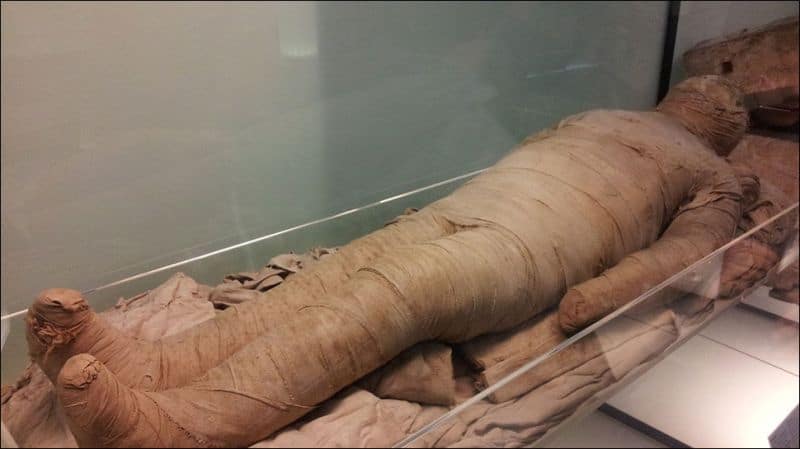London: Archaeologists have discovered a 1,000-year-old mummy, completely intact and in well-preserved condition, in what is thought to be a late 15th century Inca pilgrimage site in Peru.
“The deceased is still wrapped in the enormous funeral bundle that served as a coffin,” said Peter Eeckhout, Professor at the Universite libre de Bruxelles in Belgium.
“Discoveries like this one are exceptionally scarce, and this mummy is incredibly well preserved. Samples were collected for carbon-14 dating, but the area in which it was discovered and the type of tomb suggest this individual was buried between 1000 and 1200 AD,” he added.
The mummy is part of the discovery of three monumental structures explored during the campaign, including a sanctuary dedicated to the local ancestors.
Under Inca rule, in the late 15th century, the place appears to have been transformed into a water and healing temple.
The archaeologists have also discovered many offerings left by worshippers, such as Spondylus shells imported from Ecuador; these are associated with the influx of water during El Nino, and they symbolise fertility and abundance.
Before the Inca settled in the area, the sanctuary included large funerary chambers and numerous mummies, most of which were looted during the Spanish conquest.
However, a funeral chamber that held the mummy was found intact during the excavations.
Due to how well it was preserved, the researchers will be able to study it without needing to unwrap the bundle.
According to researchers, all these discoveries indicate that Incas made considerable changes to the Pachacamac site, in order to create a large pilgrimage centre on Peru’s Pacific coast.
The archaeologists will soon examine the mummy using the latest techniques in medical imaging (X-ray scans, axial tomography, 3D reconstruction, etc.). This will enable them to determine the individual’s position, any pathologies they might have suffered from, but also what offerings might be inside the bundle.
The other excavated structures include an Inca monument intended to host pilgrims and rituals, and probably one of the “chapels” for foreign pilgrims, many “foundation” offerings, such as vases, dogs, and other animals, as well as a platform with a hole in the centre, where an idol was likely placed.
The complex appears to have been designed around this idol, involved in religious activities with pilgrims.
“Deities and their worship played a major part in the life of Pre-Colombian societies…and by promoting empire-wide worship, Incas contributed to creating a common sense of identity among the many different peoples that made up the empire,” Eeckhout said.
IANS

